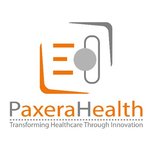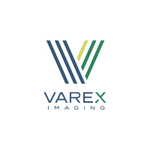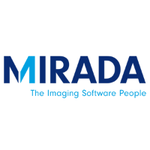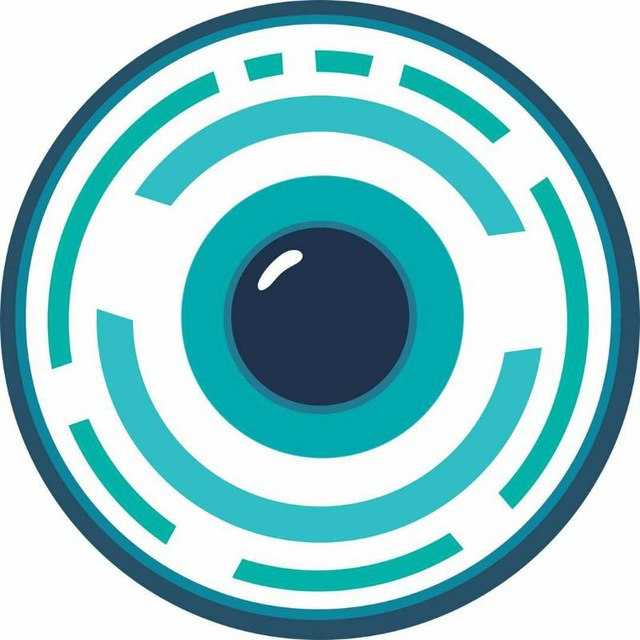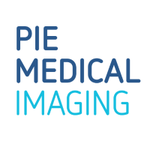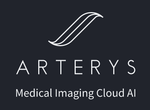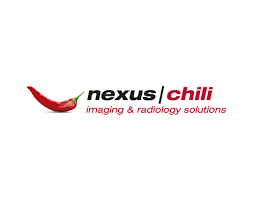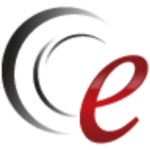What Is Medical Imaging Software?
Medical imaging software is a powerful tool that enables healthcare workers to see and analyze diagnostic pictures like X-rays, CT scans, MRI scans, and ultrasounds. It is essential for diagnosing, treating, and monitoring a variety of medical diseases. This program organizes, stores, and manipulates vast volumes of medical images, making them easier for healthcare workers to access and comprehend.
One of the primary benefits of medical imaging software is its capacity to enhance and increase image quality, resulting in a more detailed and accurate representation of the patient's condition. This can help in early detection and more precise illness diagnosis, resulting in improved treatment outcomes. Furthermore, medical imaging software provides a variety of tools and capabilities that enable measurements, annotations, and picture comparison, allowing healthcare practitioners to make more educated clinical judgments. It also facilitates teamwork by allowing numerous users to exchange and access medical photos from different locations.
Medical imaging software not only aids in diagnosis and treatment, but it also helps with research and education. It allows medical students and researchers to examine and evaluate medical images, resulting in advances in the field of medicine. When choosing medical imaging software, look for user-friendly interfaces, interoperability with numerous imaging modalities, and strong security features to protect patient confidentiality. It is also critical to assess the software's customer support and training offerings in order to maximise its use and effectiveness.
What Are The Recent Trends In Medical Imaging Software?
Recent technological breakthroughs have had a tremendous impact on medical imaging software. From increased image quality to quicker processing speeds, these developments are propelling the creation of cutting-edge software that is changing the way doctors diagnose and treat patients. One of the most important developments in medical imaging software is the use of artificial intelligence (AI) and machine learning algorithms.
This enables the automation of operations like image analysis, making them faster and more precise. AI-powered software can also detect irregularities and aid in the diagnosis process, resulting in more accurate and efficient patient care. Another trend in medical imaging software is the incorporation of cloud computing. Storing and maintaining medical data has become increasingly difficult as the amount of data created grows.
Cloud-based imaging software provides a safe and easily accessible platform for medical professionals to store and distribute patient data. This trend also facilitates collaboration among medical teams and enables access to advanced imaging tools from anywhere, thereby enhancing patient care. Another growing trend in medicine is the development of 3D and virtual reality (VR) imaging software. These technologies provide more immersive and detailed visualizations of medical images, providing better insight into patient situations and aiding in surgical planning.
Furthermore, there has been an increase in the creation of mobile medical imaging software. With the widespread usage of smartphones and tablets, medical professionals may now access and analyze images on their mobile devices, expanding accessibility and enabling for image interpretation and diagnosis while on the go. Finally, there is an increased emphasis on data security in the medical imaging software business. With a rising number of cyber threats, software developers are adding strong security measures to secure sensitive medical data while adhering to tight privacy requirements.
Benefits Of Using Medical Imaging Software
Medical imaging software is a valuable tool for healthcare professionals because it allows them to see and interpret medical images including X-rays, MRIs, and CT scans. It has transformed the way medical imaging is utilized, offering various advantages to healthcare providers, patients, and clinics alike.
Here are the primary advantages of using medical imaging software so you can make an informed decision when buying one for your practice.
1. Increased Efficiency And Productivity: One of the most major advantages of adopting medical imaging software is that it allows healthcare personnel to work more efficiently and effectively. Healthcare practitioners can use the software's extensive features to rapidly and accurately evaluate, analyze, and distribute medical pictures, saving time and effort over manual operations. This allows them to concentrate more on patient care, resulting in increased production and overall efficiency.
2. Accurate And complete Diagnoses: Medical imaging software has powerful tools and features that help patients receive accurate and complete diagnoses. It enables healthcare workers to zoom in on specific areas, edit photos, and compare photographs taken at different periods in time to properly follow changes in a patient's condition. This allows them to make more informed and precise diagnoses, resulting in better treatment approaches and patient outcomes.
3. Cost-Effective: Medical imaging software improves efficiency and productivity while also providing a cost-effective solution for clinics and hospitals. Eliminating the need for film and printing lowers material costs, storage space, and on-site maintenance requirements. Furthermore, improved operations and speedier turnaround times might result in cost savings for the healthcare organization.
4. Improved Patient Care And Experience: Medical imaging software has a significant impact on patient care and satisfaction. Patients can use a digital viewing platform to exchange their medical photos with other healthcare practitioners, which reduces the need for several appointments and travel. This not only saves patients time and effort, but also allows them to obtain timely and coordinated care, resulting in a more positive overall experience.
5. Data Management And Security: Medical imaging software includes strong data management and security features to ensure that patient information is kept secret and secure. It enables healthcare workers to securely save and retrieve medical images, track changes, and collaborate with other clinicians as needed. This not only protects patient privacy but also aids compliance with regulatory regulations.
Important Factors To Consider While Purchasing Medical Imaging Software?
When purchasing medical imaging software for your clinic or hospital, there are several important elements to consider to ensure you make the best option for your facility.
From compatibility to user-friendliness, these are the most significant criteria to consider when selecting medical imaging software:
1. Compatibility: The first and most important aspect to examine is compatibility. Ensure that the program you are considering is compatible with your hardware and operating system. Otherwise, you may encounter compatibility concerns, causing severe obstacles in your operations.
2. Features And Functions: It is critical to evaluate the features and functions provided by the software. Look for features relevant to your medical expertise, such as 3D reconstruction or PACS integration. Also, evaluate whether the software includes customized templates and automated processes to increase efficiency.
3. Usability: A user-friendly interface can make a huge difference in how easy it is to understand and utilize software. Look for an intuitive and easy-to-use platform that includes thorough tutorials and training resources.
4. Security And Compliance: When working with medical imaging, it is critical to protect patient data and follow HIPAA rules. Ensure that the software includes strong security measures, such as data encryption and regular backups. It should also follow all applicable requirements to ensure patient privacy.
5. Technical Support: You may undoubtedly experience technical troubles with the product. Make sure the provider provides dependable technical support and fast assistance to resolve any issues that may emerge.
6. Cost And Scalability: Determine your budget and select software that provides the best value for your money. It should also be scalable to meet any future requirements as your facility expands.
7. The Vendor's Reputation And Reviews: Do your research and select a reliable source with great client feedback. Reading about other users' experiences with the program might provide you with vital insights and help you make an informed decision. By taking these criteria into account, you can guarantee that the medical imaging software you select fulfills your facility's specific requirements while also improving your workflow, resulting in the greatest treatment for your patients.
What Are The Key Features To Look For In Medical Imaging Software?
When it comes to selecting the best medical imaging software for your healthcare facility, you need evaluate many crucial elements to make an informed decision.
These characteristics will ensure that the program satisfies your current demands while also allowing for future expansion and adaptability.
1. Image Quality And Resolution: One of the most significant characteristics to look for in medical imaging software is the capacity to generate high-quality images with detailed resolution. This is essential for appropriate diagnosis and therapy planning, as well as producing a thorough patient record.
2. Compatibility And Integration: The software's compatibility and integration capabilities are also vital to evaluate. It should work seamlessly with other systems and devices, including as PACS, EHR, and imaging equipment, to ensure effective data transmission and workflow.
3. sophisticated Visualization And Analysis Tools: The software should have a wide range of sophisticated visualization and analysis tools to assist healthcare professionals in properly interpreting and analyzing medical pictures. This encompasses 3D and 4D imaging, multi-planar reconstruction, and quantitative analytic tools.
4. User-Friendly Interface: A user-friendly interface is vital for the software's efficiency and ease of use. It should be straightforward and intuitive in design, with customisable features to meet the needs and tastes of many users.
5. Security And Privacy: Because medical imaging involves sensitive patient data, security and privacy should be given top consideration. To prevent unwanted access to patient information, the program should have robust data encryption and access control features.
6. Scalability And Upgrades: Medical imaging software is a long-term investment, so choose a platform that can grow with your facility's needs and technological improvements. Look for software that provides regular updates and upgrades to keep up with industry standards.
7. Customer Service And Training: Choosing a software vendor who provides solid customer assistance and training is critical for a seamless transition and proper product use. Before making a selection, ask about the level of support and training provided.
Why Do Businesses Need Medical Imaging Software?
Medical imaging software has emerged as a crucial tool for healthcare businesses. Traditional medical imaging procedures, such as X-rays and MRI scans, have been digitized as technology has advanced, allowing for faster and more precise diagnoses. This has pushed enterprises to use medical imaging software to improve their offerings and streamline their operations. But what exactly is medical imaging software, and why should businesses invest in it?
Let us find out.
1. Accurate And Rapid Diagnosis: One of the key motivations for organizations to use medical imaging software is to give accurate and rapid diagnoses. With this program, medical experts may see and analyze high-resolution photos in real time, allowing them to make precise and timely diagnosis. This can lead to considerable improvements in patient outcomes and satisfaction.
2. Improve Workflow Efficiency: Medical imaging software is intended to streamline the workflow of healthcare workers. It allows them to easily view and share photographs and reports, removing the need for physical storage. This not only saves time, but also allows for better collaboration between doctors and radiologists, ultimately leading to increased workflow efficiency.
3. Cost-Effective And Time-Saving: Investing in medical imaging software can save firms money. Traditional methods require the purchase of expensive equipment and supplies for each imaging process. However, with software, all photos are digitally stored, which reduces the requirement for physical storage and lowers costs. Furthermore, the program can save time by automating tasks like picture processing and report preparation.
4. Improve Patient Satisfaction: In today's fast-paced environment, patients want timely and accurate diagnoses and treatments. Healthcare organizations that use medical imaging software can deliver a better experience for their patients. The software allows for speedier diagnosis, which reduces patient wait times and, as a result, increases satisfaction.
5. Compliance With Regulations: With tight rules governing the healthcare industry, firms must ensure that patient data is safely maintained and protected. To ensure compliance with these rules, medical imaging software includes rigorous security features such as encryption and access controls. This can not only avoid data breaches, but also increase patient trust.
How Much Time Is Required To Implement Medical Imaging Software?
The implementation timetable for medical imaging software varies based on a number of factors, including the software's complexity, the size and structure of the healthcare facility, and the level of customization necessary. On average, the implementation process can take three to twelve months. This includes the time spent on initial setup and configuration, training, and data migration.
However, some software vendors give pre-configured templates and quick-start alternatives, which can dramatically shorten the implementation time to a few weeks. This is suitable for smaller facilities or those seeking a quick answer. Larger facilities or those with more complicated operations may require longer installation times due to the need for extensive planning, testing, and training to ensure seamless integration and optimal software utilization.
It is critical for the buyer to discuss their individual requirements and expectations with the software provider in order to obtain a realistic estimate of the implementation timetable for their particular situation. This will also allow for any necessary changes in resource allocation and scheduling.
What Is The Level Of Customization Available In Medical Imaging Software?
Medical Imaging Software provides varying levels of flexibility to meet the specific needs of healthcare organizations. This enables a more efficient and personalized approach to using the program, thereby improving patient care and efficiency. Most medical imaging software packages provide basic customization features, such as unique user interfaces, configurations, and user permissions.
This allows healthcare providers to tailor the program to their organization's specific workflows and user roles. Furthermore, many medical imaging software solutions provide advanced customization options such as custom reporting and connectivity with other systems. This enables healthcare organizations to personalize reports and integrate them with current systems, making patient information more accessible and shareable.
Some medical imaging software systems can provide customisation for specialized clinical applications, such as cardiovascular imaging or oncology. This gives healthcare providers a personalized tool for their individual medical needs, which improves the accuracy and speed of diagnosis and treatment. Furthermore, most medical imaging software packages allow for modification via third-party add-ons or software development kits (SDKs). This enables healthcare facilities to further customize the software to meet their individual needs and combine it with other systems or equipment.
Which Industries Can Benefit The Most From Medical Imaging Software?
Medical imaging software has become an indispensable tool in the healthcare business, enabling higher diagnostic accuracy, quicker workflow, and better patient care. However, the advantages of this modern technology are not confined to the healthcare industry.
Other sectors can also benefit from adopting medical imaging software into their operations.
1. Healthcare Industry: When it comes to industries that stand to benefit the most from medical imaging software, the healthcare industry is the clear option. With the growing demand for rapid and accurate diagnostic tools, medical imaging software has become an essential component of the modern healthcare system. This software is used in hospitals and clinics, as well as diagnostic and imaging facilities, to process and analyze medical images such as X-rays, MRIs, CT scans, and ultrasounds, allowing healthcare professionals to make more accurate and timely diagnoses.
2. Research And Development: Medical imaging software aids in the discovery and development of new treatment approaches and medical technologies. This program is used by researchers and scientists to analyze and interpret medical images, providing vital insights into a variety of diseases and ailments. This, in turn, aids in the development of novel pharmaceuticals, therapies, and medical technologies, which benefit people globally.
3. Education And Training: Learning and practicing medical imaging procedures might be difficult without the assistance of advanced technologies. Medical imaging software not only provides an accurate platform for students to learn and grasp these approaches, but it also enables hands-on teaching in a virtual setting. This program also helps to build critical thinking and decision-making abilities, preparing future medical professionals for real-world circumstances.
4. Forensics: Medical imaging software has found use in the realm of forensics. Its purpose is to study and interpret photographs of bones, soft tissues, and other body parts in order to ascertain the cause of death or identify suspects. This new technology has substantially increased the accuracy and speed of forensic investigations, resulting in more consistent and fast outcomes.
5. Veterinary Medicine: Animals, like humans, require medical imaging for diagnosis and treatment. Medical imaging software can help veterinarians and hospitals diagnose and treat a wide range of animal ailments and injuries. This program is also utilized in veterinary research and development, resulting in better animal healthcare.
Conclusion
To summarize, investing in the appropriate medical imaging software is critical for any healthcare organization seeking to increase efficiency, accuracy, and patient care. With technological improvements and an increased desire for faster operations, it is critical to carefully consider your options before making a decision. Consider your facility's specific needs and goals, and make sure the software you chose meets them.
Look for powerful image processing capabilities, easy interaction with your existing systems, and user-friendly interfaces. Take into account the vendor's reputation, customer service, and pricing options. By following these criteria and conducting extensive research, you can select medical imaging software that not only satisfies your current requirements but also has the potential to expand and adapt to future advancements in the industry.
This will help not only your institution, but also patient outcomes and satisfaction. Remember to demo the product and include key stakeholders in the decision-making process to ensure an educated and effective investment. We appreciate you reading our medical imaging software buyer's guide. We hope you found it useful and made an informed decision. Here's to a more effective and improved healthcare system.

